SEARCH SITE
Frequently asked oven questions
"Out of Autoclave" A new direction for composites
With a drive to reduce composite production costs, the aerospace and materials industries have jointly developed composite materials and processes to allow autoclaved parts to be cured in lower-cost ovens. In hundreds of companies, efforts are underway to transition parts toward "out of autoclave" processing. As a major autoclave provider, ASC sees this trend continuing and, rather than buck the trend, we are embracing it.
We bring autoclave technology to composite curing ovens
ASC autoclaves cure billions of dollars worth of aerospace parts each year. Each one of these parts is required to be cured to an exacting process specification, and our customers demand that the autoclave control system collect, analyze, and report on the data for every part.
As autoclaved parts transition to composite curing ovens, our customers are now looking for the same level of quality, control, and data collection as they have become reliant upon in their autoclave operations. Unfortunately, the "old-school" oven industry has never kept up with the technological advances that have driven the autoclave industry. The result is antiquated process control that cannot meet future composite needs.
Fortunately, ASC has the processing knowledge, the know-how, and the technology required to bring autoclave quality, control, and data collection to oven processing.
We can help you transition from autoclave to composite curing oven
For customers who are looking at transitioning from autoclave to "out of autoclave" processing, ASC can provide consulting, engineering, and design analysis to ensure that your parts and tooling will cure properly in an oven. By using state-of-the-art CFD (Computational Fluid Dynamics) software, our engineers can simulate how your tooling will heat in specific oven configurations. With the results of that data, we can then recommend specific oven configurations and capabilities to ensure problem-free processing.
Large structure curing in conventional composite curing ovens
Although "out-of-autoclave" processes for small, secondary structures have been very successful, only recently have aerospace customers tried to bring "out of autoclave" processing to large primary structures.
These large composite structures have historically been cured in autoclaves. The curing of these structures involves massive Invar or aluminum tooling, and as some tools can weigh 100,000 lbs (45,000 kg) or more, the autoclave is able to heat the load at the prescribed rates due to the increased heat transfer effect of pressurized nitrogen media.
Unfortunately, customers who want to transition these primary structures to an oven are left with a very big problem. Because the oven operates at atmospheric pressure, it is far less capable than an autoclave at transferring thermal energy into tools and parts. Actually, due to air density changes, an autoclave at 100 psi (6.9 bar) provides 7-times the thermal transfer coefficient as a conventional oven. As a result of the low thermal transfer, the large primary structures will, in most cases, fail to meet minimum heat rates.
*Images above are courtesy of composite world magazine.
Available Oven Options
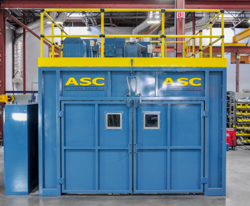
Standard Oven Models
Our standard industrial ovens from our batch ovens, walk-in ovens, and CFRP ovens, to our composite curing ovens, are state-of-the-art and provide more advanced features and higher performance than any other industrial oven product on the market.
If you do not see a standard model in the list below that fits your composite curing oven requirements, please click the "Request form" tab above and let us know what you are looking for. We manufacture industrial curing ovens of all sizes, types, and capabilities.


| Model Series | Working Width | Working Depth | Working Height | Working Temp. | Get a Quote |
|---|---|---|---|---|---|
| OV6X6X6 | 72" (1,828mm) | 72" (1,828mm) | 72" (1,828mm) | 550F (288C) | |
| OV8X8X8 | 96" (2,438mm) | 96" (2,438mm) | 96" (2,438mm) | 550F (288C) | |
| OV8X10X8 | 96" (2,438mm) | 120" (3,048) | 96" (2,438mm) | 550F (288C) | |
| OV8X20X8 | 96" (2,438mm) | 240" (6,096) | 96" (2,438mm) | 550F (288C) | |
| OV10X10X8 | 120" (3,048) | 120" (3,048) | 96" (2,438mm) | 550F (288C) | |
| OV10X20X8 | 120" (3,048) | 240" (6,096) | 96" (2,438mm) | 550F (288C) | |
| OV12X12X8 | 144" (3,657) | 144" (3,657) | 96" (2,438mm) | 550F (288C) | |
| OV12X20X8 | 144" (3,657) | 240" (6,096mm) | 96" (2,438mm) | 550F (288C) |
Composite Curing Ovens
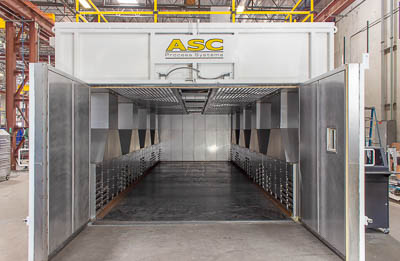
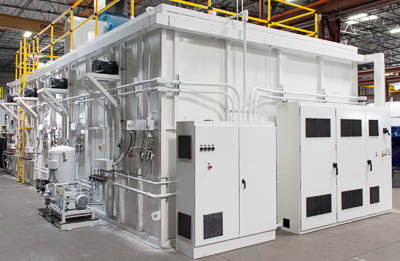
Large Composite Curing Ovens by ASC.
We design, engineer, & manufacture carbon fiber composite curing ovens.
ASC Process Systems offers a wide array of small to large-scale composite curing oven configurations for the aerospace industries. Unlike typical composite curing ovens on the market, the ASC composite ovens are built specifically to me the demanding aerospace grade out-of-autoclave compositing curing requirements with advanced CPC controls, autoclave grade vacuum systems, and much more. At ASC, we engineer, fabricate, ship, install, and train you and your team so nothing is left overlooked. You will have peace of mind in owning the most efficient, reliable, and highest-performing composite curing oven available.
In-house CFD (Computational Fluid Dynamics) Analysis
Our Engineers take full advantage of today’s advanced technologies when designing our ovens. With our in-house CFD (Computational Fluid Dynamics) engineering capabilities, our Engineers are able to develop the most advanced and capable composite curing oven systems available worldwide.
Often, we are hired by major aerospace companies to validate large aerospace tooling and demonstrate how those tools will heat in different oven configurations. This capability gives us an advantage in the oven design and provides the customer with an assurance that the oven we deliver will heat, cool, and cure their parts as specified.
We can help you find the correct solution for all your composites curing needs today!
Structurally Sound Composite Ovens
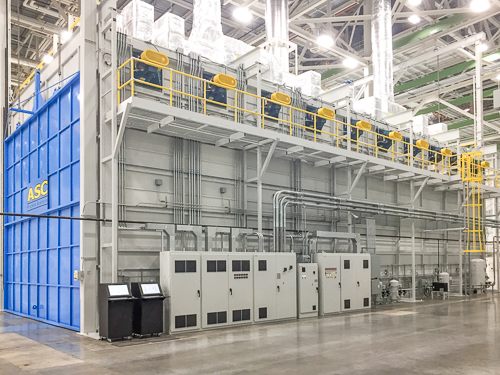 When purchasing an oven for curing composites, it is very important to understand the difference between an ASC composite curing oven and a conventional “panel oven”.
When purchasing an oven for curing composites, it is very important to understand the difference between an ASC composite curing oven and a conventional “panel oven”.
At first glance you might not be aware of the difference, however, the difference will show up in system efficiency, performance, reliability, and overall cost of ownership. Rather than follow the industry and build "panel ovens", we have designed our composite curing ovens for efficacy, high durability, and long life through sound engineered construction and quality materials.
In a conventional “panel oven”, the oven's walls and ceilings are made with interlocking 22" (550mm) wide 20ga sheet-metal panels. While this oven configuration is cost-effective at first, it is certainly not designed for long-term reliability or energy conservation. With this style of fabrication, there is a seam between each panel that creates a thermal leak point. In other words, each seam is constantly allowing cold air into the oven, and heated air to escape requiring the oven to heat excess air.
While a typical ASC composite curing oven, each wall of the oven is made as a structural element with heavy-duty steel tubing, heavy-wall 14GA plate, and very few seams. The result is an oven that reduces thermal leakage by 95% when compared to a “panel oven”.
Large Composites Ovens

Our primary focus is on designing and building walk-in composite curing ovens for the aerospace composites industry. However, smaller composite oven projects will be considered for bid.
Large Oven Assembly

Depending on the size of the oven, ASC can erect the oven at our shop and ship an integrated, or we can ship larger ovens in sections for field assembly.
High Airflow equals
Quicker cure cycles

An ASC composite oven will usually have much more airflow than a competitive oven. Because we are composite experts, we know that high flow is the only real way to improve the heating of your parts and tools. By directing more air to your parts, the overall cycle time is reduced.
Adherence to specification & built to code

We design and manufacture our ovens to your processing and operational specifications and requirements. Designed and Engineered in accordance with all applicable codes and standards worldwide, you can be assured that ASC ovens will not only meet but also exceed all of your specific requirements.
The CPC advantage for composite curing ovens
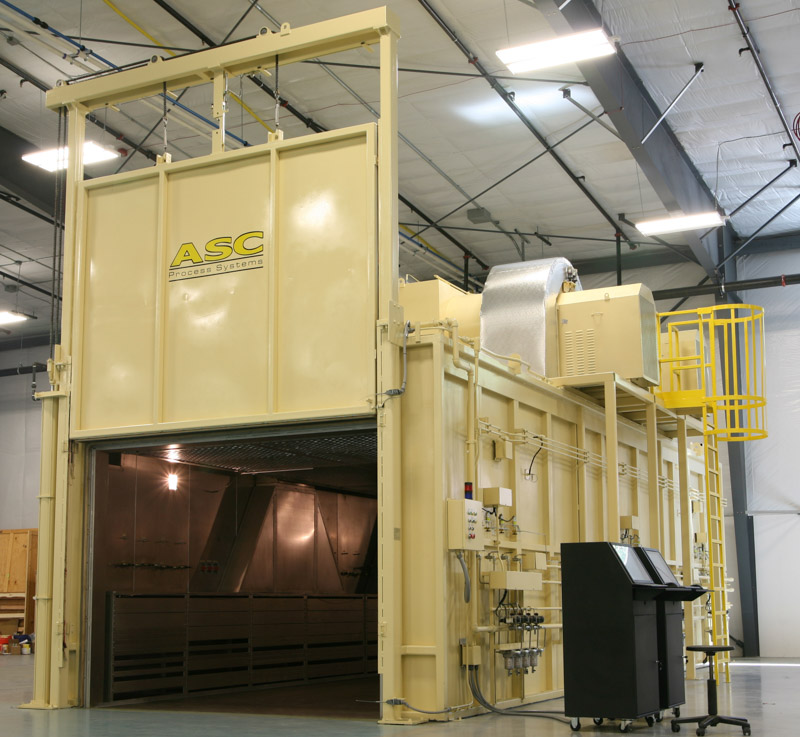 ASC's composite curing ovens come standard with ASC's flagship control system - CPC. CPC (Composite Processing Control) is the world's leading control software solution for composite curing in autoclaves, ovens, and presses. With over 1500 pieces of equipment being controlled by CPC every day, our composite processing control system, CPC, is the most popular control software for composite processing.
ASC's composite curing ovens come standard with ASC's flagship control system - CPC. CPC (Composite Processing Control) is the world's leading control software solution for composite curing in autoclaves, ovens, and presses. With over 1500 pieces of equipment being controlled by CPC every day, our composite processing control system, CPC, is the most popular control software for composite processing.
CPC is designed specifically for composites, and as such, it has more than 1000 built-in features and capabilities that other oven control packages don't have. First launched in 1988, CPC has evolved through the years to accommodate the new and ever-changing demands of the composite community. If you’re needing to meet the requirements of NADCAP, AS9100, Boeing AMS2750, or other material and quality requirements, CPC is your answer.
Our customers have a saying, "A great oven + a bad software package = a bad oven. A bad oven + a great software package = a good oven. A great oven + a great software package = a GREAT OVEN". ASC is the only company that can deliver a truly great oven experience.
Aerospace-grade vacuum technology on our composite curing ovens
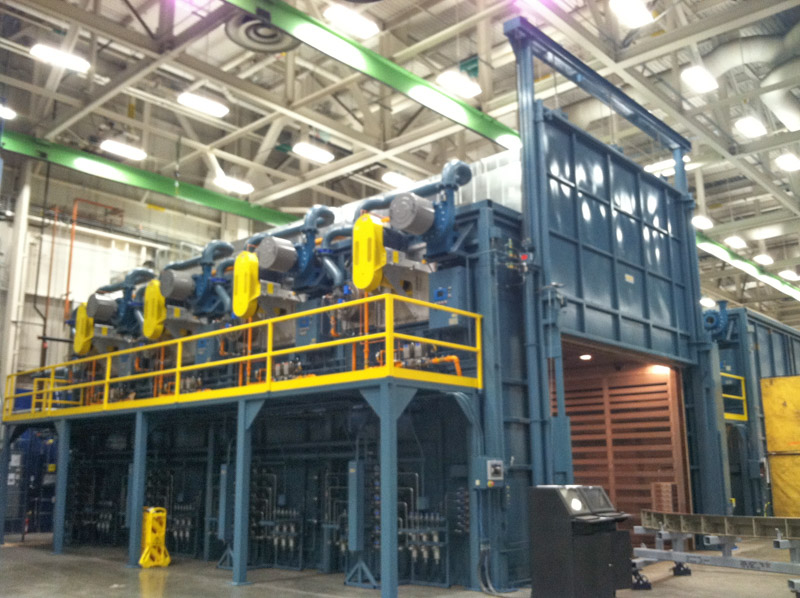 Since our customers require the same level of reliability and performance found in our autoclave vacuum systems, choosing the right vacuum system for our composites curing ovens was easy.
Since our customers require the same level of reliability and performance found in our autoclave vacuum systems, choosing the right vacuum system for our composites curing ovens was easy.
Utilizing the same high standard of quality and reliability found on our autoclave vacuum systems, our ovens include PC-controlled vacuum source lines and PC-monitored vacuum probe lines, the CPC system can perform automatic leak tests before the cure cycle and can provide leak tests during the run. No other oven manufacturer can provide this capability.
Like our autoclave vacuum systems, we use stainless-steel valves and stainless-steel tubing for all of our vacuum ports, ensuring long-life and leak-free operations.



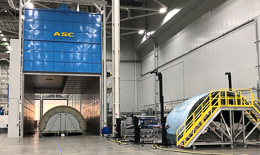
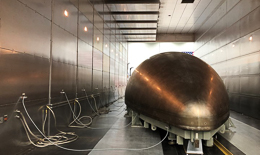
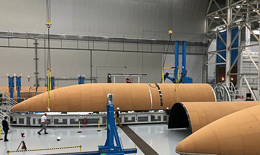
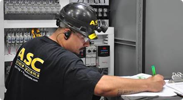
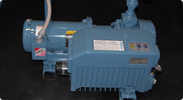
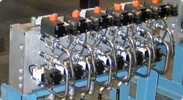
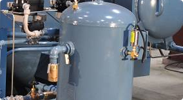
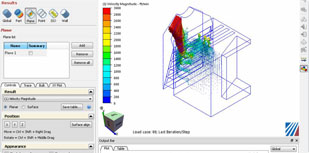







 AUSTRIA
AUSTRIA BRAZIL
BRAZIL CHINA
CHINA FRANCE
FRANCE GERMANY
GERMANY ITALY
ITALY JAPAN
JAPAN LATIN AMERICA
LATIN AMERICA RUSSIA
RUSSIA SOUTH KOREA
SOUTH KOREA SPAIN
SPAIN UK
UK USA
USA